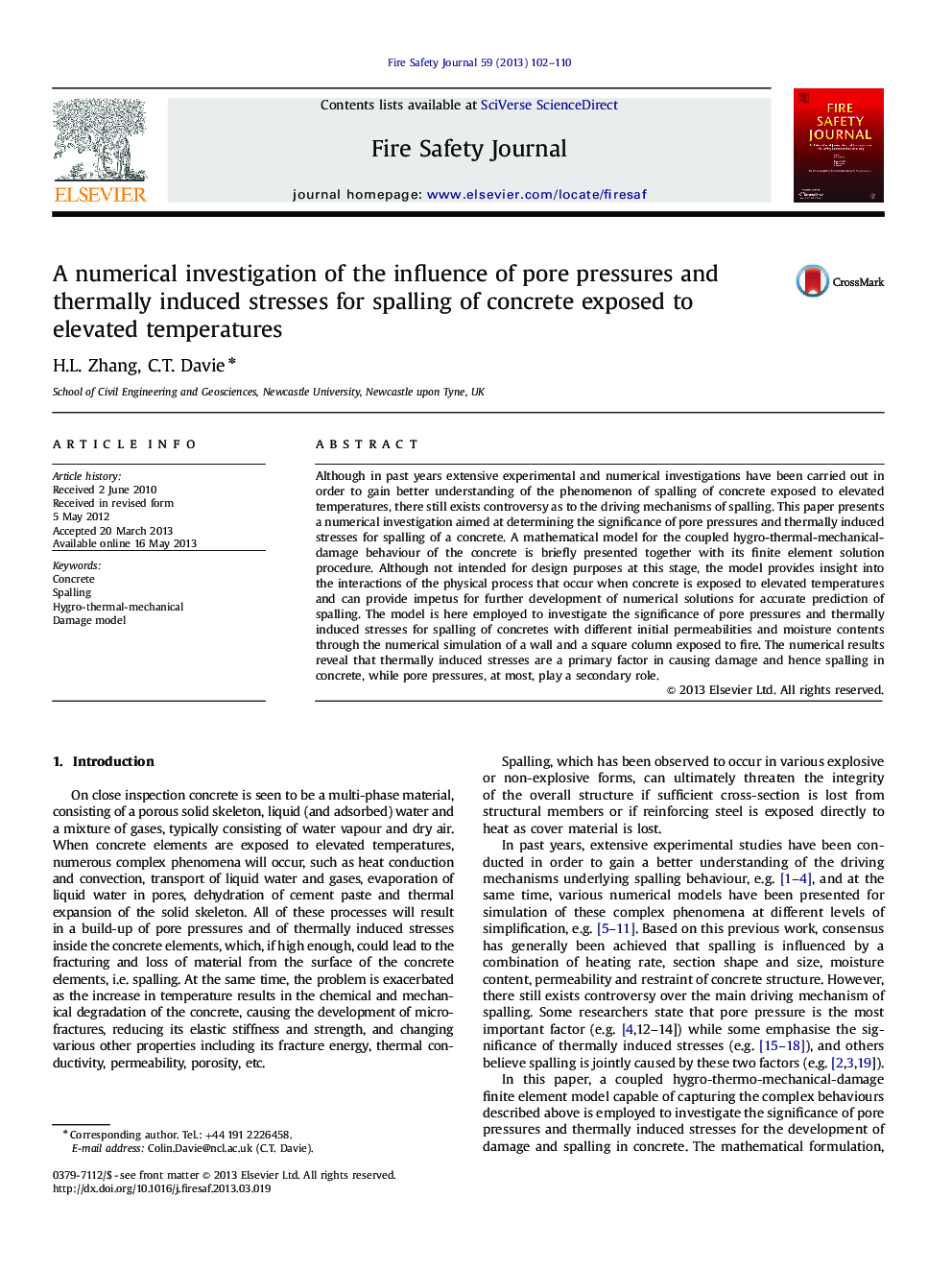| Article ID | Journal | Published Year | Pages | File Type |
|---|---|---|---|---|
| 269989 | Fire Safety Journal | 2013 | 9 Pages |
•Hygro-thermo-mechanical modelling of concrete spalling when exposed to fire.•Studied relative roles of thermally induced stresses and pore pressures in spalling.•Considered examples of a wall (surface spalling) and a column (corner spalling).•Found thermally induced stresses primary driver of spalling.•Pore pressures play, at most, a secondary role.
Although in past years extensive experimental and numerical investigations have been carried out in order to gain better understanding of the phenomenon of spalling of concrete exposed to elevated temperatures, there still exists controversy as to the driving mechanisms of spalling. This paper presents a numerical investigation aimed at determining the significance of pore pressures and thermally induced stresses for spalling of a concrete. A mathematical model for the coupled hygro-thermal-mechanical-damage behaviour of the concrete is briefly presented together with its finite element solution procedure. Although not intended for design purposes at this stage, the model provides insight into the interactions of the physical process that occur when concrete is exposed to elevated temperatures and can provide impetus for further development of numerical solutions for accurate prediction of spalling. The model is here employed to investigate the significance of pore pressures and thermally induced stresses for spalling of concretes with different initial permeabilities and moisture contents through the numerical simulation of a wall and a square column exposed to fire. The numerical results reveal that thermally induced stresses are a primary factor in causing damage and hence spalling in concrete, while pore pressures, at most, play a secondary role.
